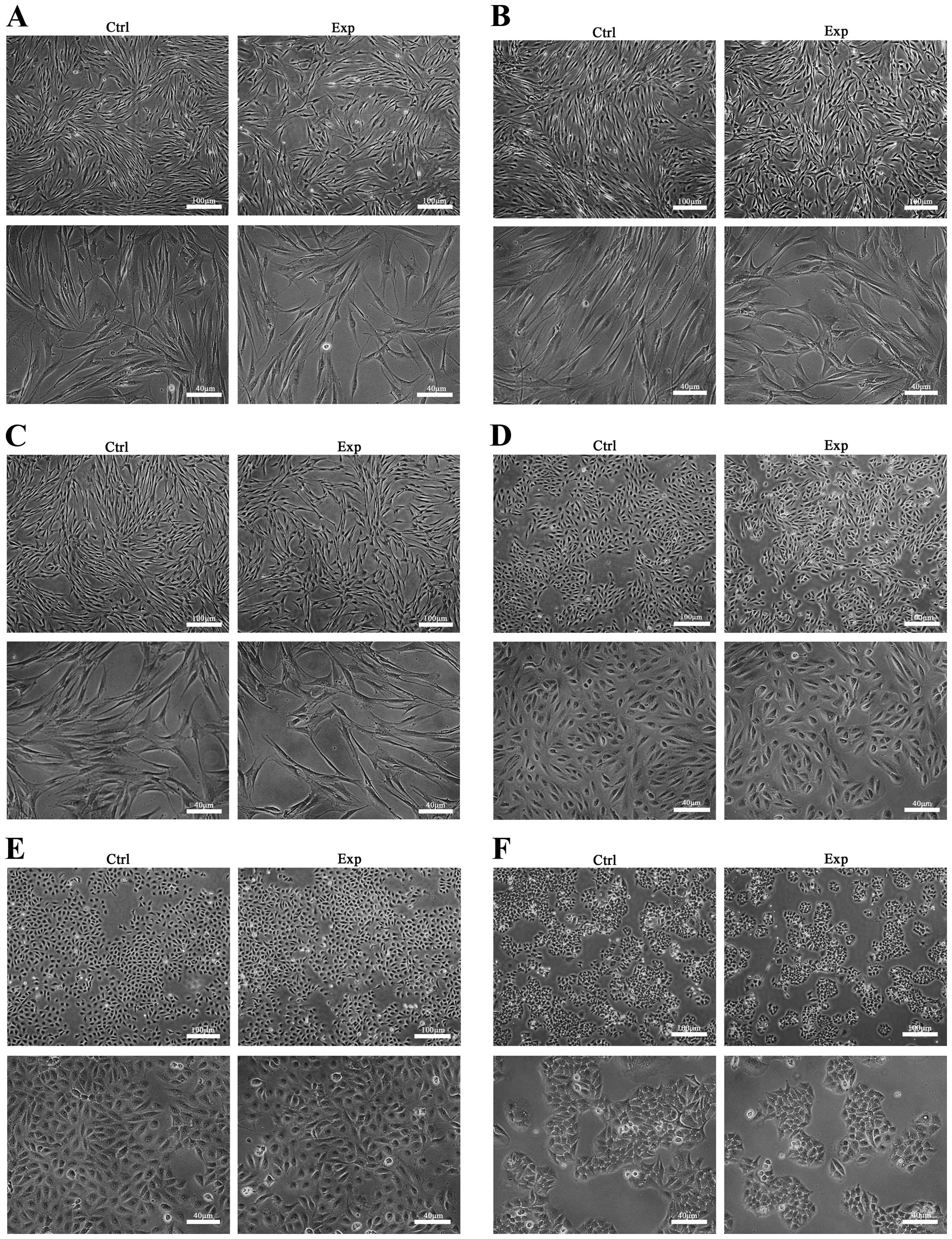Analysis of multiple types of human cells subsequent to bioprinting with electrospraying technology
- Authors:
- Published online on: October 25, 2016 https://doi.org/10.3892/br.2016.790
- Pages: 723-730
Metrics: Total
Views: 0 (Spandidos Publications: | PMC Statistics: )
Total PDF Downloads: 0 (Spandidos Publications: | PMC Statistics: )
Abstract
The aim of the present study was to investigate bioprinting with electrospraying technology using multiple types of human cell suspensions as bio-ink, in order to lay the initial foundations for the application of the bioprinting technology in tissue engineering. In the current study, six types of human cells were selected and cultured, including human fibroblasts, human adipose‑derived stem cells (hADSCs), human periodontal ligament cells (HPDLCs), adult human retinal pigment epithelial cells (ARPE‑19), human umbilical vascular endothelial cells (HUVECs) and human gastric epithelial cell line (GES‑1). Each cell type was divided into two groups, the experimental and control group. All the experimental group cells were electrosprayed using an electrospraying printer (voltage, 15 kV; flow rate, 150 µl/min) and collected in a petri dish placed 15 cm away from the needle (needle diameter, 0.5 mm). Subsequently, cell viability was detected by flow cytometry with a Live/Dead Viability kit. In addition, the cell morphological characteristics were observed with a phase‑contrast microscope after 6 h of culturing in order to obtain adherent cells, while cell proliferation was analyzed using a Cell Counting Kit‑8 assay. The control groups, without printing, were subjected to the same procedures as the experimental groups. The results of the cell viability and proliferation assays indicated a statistically significant difference after printing between the experiments and control groups only for the hADSCs (P<0.05); by contrast, no significant difference was observed in cell viability and proliferation for the other five cell types (P>0.05). In addition, there were no observable differences between all experimental and the control groups at any examined time point in the terms of cell morphological characteristics. In conclusion, bioprinting based on electrospraying technology demonstrated no distinct negative effect on cell vitality, proliferation and morphology in the present study, and thus the application of this novel technology to cell printing may provide a promising method in tissue engineering.












